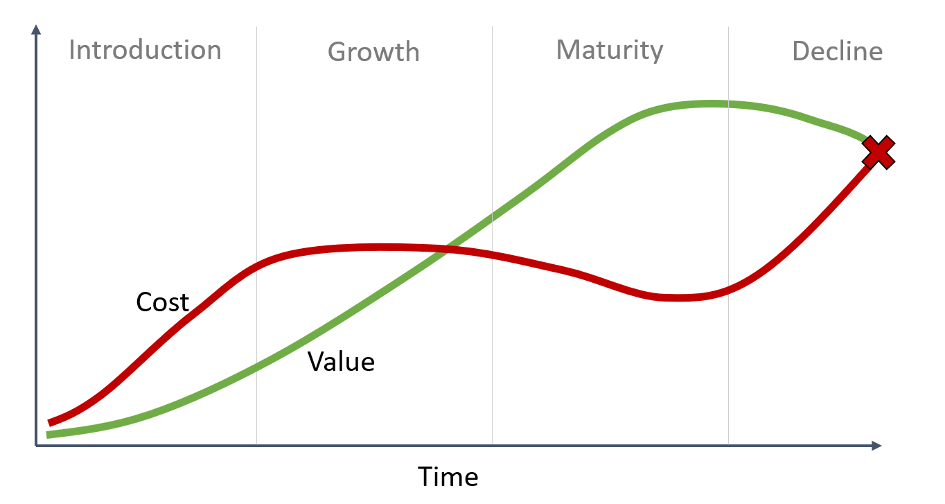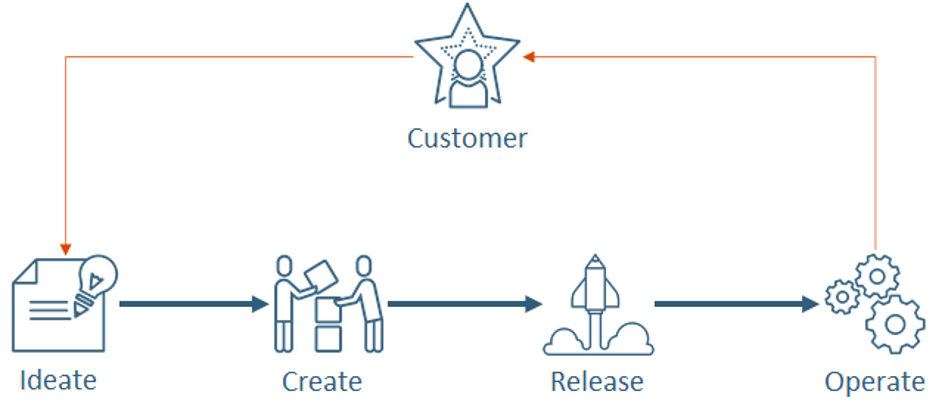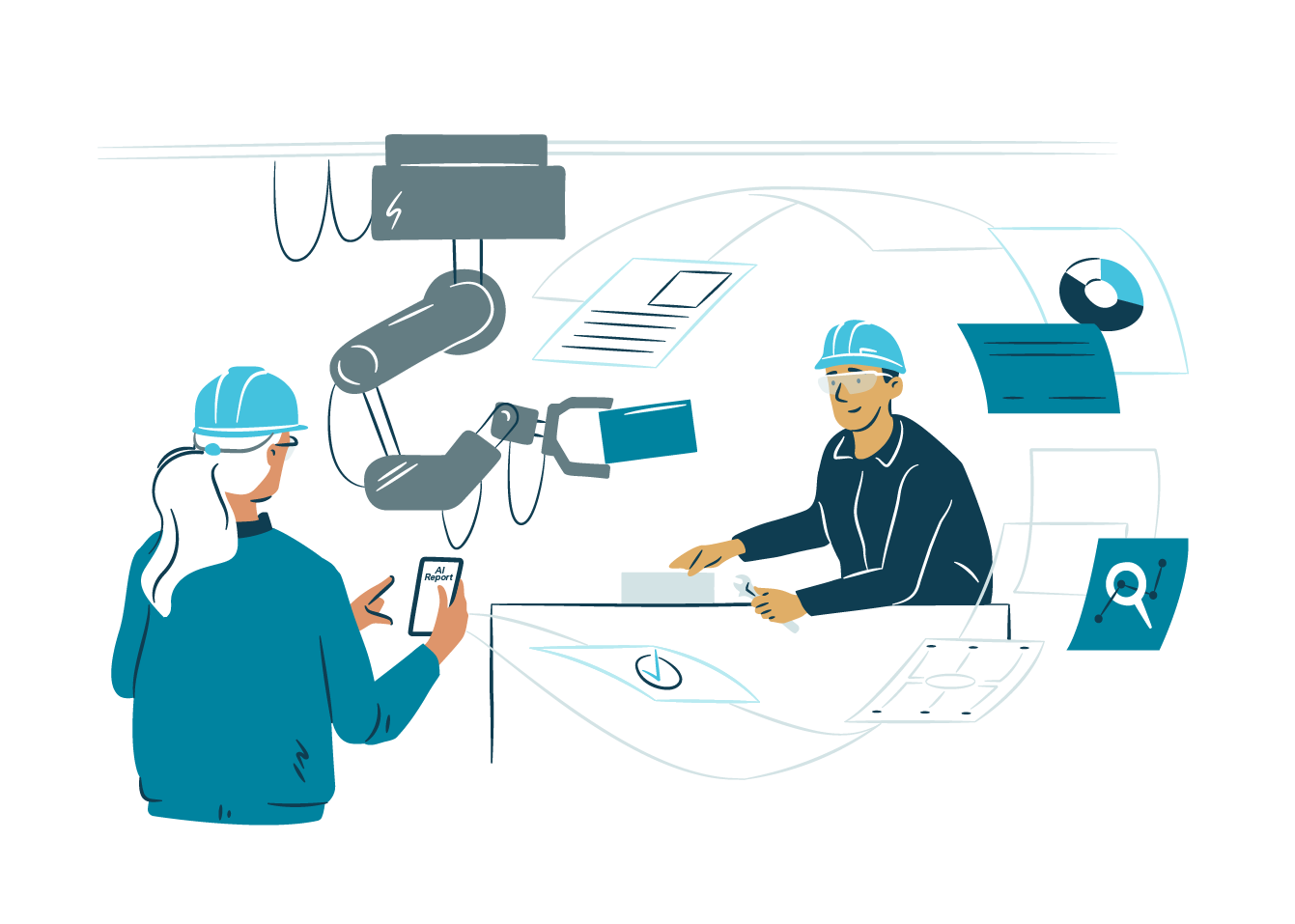DevOps has become the new de facto software development framework. Just like Agile years before, DevOps was adopted by teams. These teams were searching for ways to scale continuous integration into continuous deployment and delivery. Combining the development and operation of software into a single responsibility area is no small task. Scaling DevOps from individual teams to enterprise-level increases the complexity and difficulty by magnitudes. Organizations that strive for enterprise-level DevOps require a paradigm shift from traditional ways of organizing to a product and value stream-based approach. Basically, the Lean-Agile principles need to be spread left and right into Business and IT.
The product approach

Products have unique characteristics compared to other similar entities. Most notable of these is the product life-cycle, which requires forward-thinking, brutally objective examination i.e. life-cycle management. Traditionally we’ve viewed products as commercial entities, but a product can be anything, big or small, with a specific value proposition and a managed life-cycle. A product can be an internal operating system such as a CRM or something as small as a test automation solution. Shifting from traditional IT into product management requires an end-to-end mindset. Organizing your IT systems and platforms into a product portfolio is the first step towards adopting the enterprise DevOps.
The value stream approach

The Toyota Production System, widely referred to as Lean, approaches the organization of work as value streams. One of the core principles of Lean is to organize people around customer value-adding work, instead of spreading the work across an organization i.e. a value stream. A Value Stream Map describes the flow of customer value as the required steps and information to produce the expected customer value. Combining the Value Stream approach to the Product Approach creates a systematic way to focus on outcomes: Product Value Streams. However, the Value Streams of digital products are not the same as the value streams in a factory. They are more like networks. Interconnected nodes with the built-in capability to work around problems, instead of stopping the line once an incident occurs. To harness the benefits of product value streams, we need to understand the interconnectedness of the products and their value streams as a network. These connections need to be managed carefully to e.g. avoid suboptimization. Organizing into product value streams is an organisation-wide exercise that requires mindful engagement from every stakeholder.
Key points
Scale DevOps to enterprise level by
- Start thinking in products to make use of robust practices like life-cycle management
- Organize into value streams to organize people around work focused on customer value
- Understand the interconnectedness of your product value streams to manage your value stream network
Would you like to adopt agile and lean methodologies? Read more here


